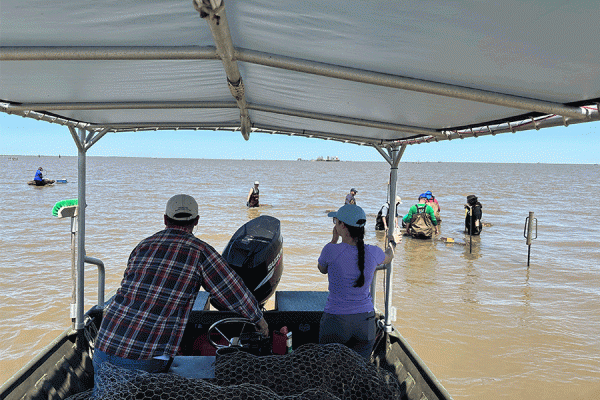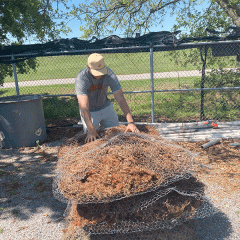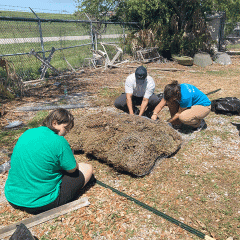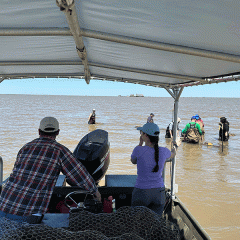University of New Orleans professor Madeline Foster-Martinez, a native of New Orleans, is using her engineering and environmental science acumen to help fight coastal land erosion in Louisiana. Foster-Martinez, an assistant professor in UNO's Department of Earth and Environmental Science and Department of Civil and Environmental Engineering, recently collaborated with the Coalition to Restore Coastal Louisiana (CRCL) to use recycled Christmas wreaths to build more land.
Foster-Martinez, whose research interests include engineering with nature, proposed using the wreaths to create a structure that helps collect sediment. Students in her earth and environmental science class then designed sedimentation enhancing structures, which they referred to as “hot pockets,” and placed them in Quarantine Bay in Plaquemines Parish.
“The wreaths came along as a neat opportunity to use a material that would otherwise go to a landfill,” said Foster-Martinez. “A colleague at CRCL was contacted by someone with Wreaths Across America, and he thought of the UNO project as a good fit.”
According to the CRCL, which coordinated the wreath collection, the intent is to slow the flow of the water so that sediment settles and land builds more quickly in an area where the Mississippi River is connected to nearby wetlands.
Foster-Martinez oversees UNO’s Coastal Interactions Lab, which has a goal to promote sustainability through improved interactions between natural coastal processes and human infrastructure. She has been working to design sedimentation enhancements devices with her class through an ongoing partnership with the Water Institute's Bay Denesse Living Lab since 2019.
“This is the fourth iteration of the class,” Foster-Martinez said. “The first few classes weren't working with wreaths, but the principle is the same—build structures to enhance sedimentation and build more land in Quarantine Bay.”
While sedimentation devices have been deployed for years, the use of wreaths as a means of collecting sediment as it flows through the Mississippi River is a newer tool in the fight against coastal erosion, Foster-Martinez said.
This semester Foster-Martinez and her earth and environmental science senior seminar students created the hot pockets by packing the dried wreaths into bags that were then strung together and shaped into an arrow. The structure was anchored in the water and staked with willow cuttings.
“The design is informed by how we know deltas once formed with woody debris creating jams and blocking flow from river floods,” Foster-Martinez said.
Foster-Martinez is also a member of the Pontchartrain Institute for Environmental Sciences at the University of New Orleans. Her research focuses on coastal wetlands and leveraging vegetation for climate change mitigation and adaptation. She uses fieldwork and modeling to address questions that promote the use of vegetation in coastal protection strategies, accelerate land building in deltaic areas and increase the accuracy of coastal landscape predictions at a variety of scales.











